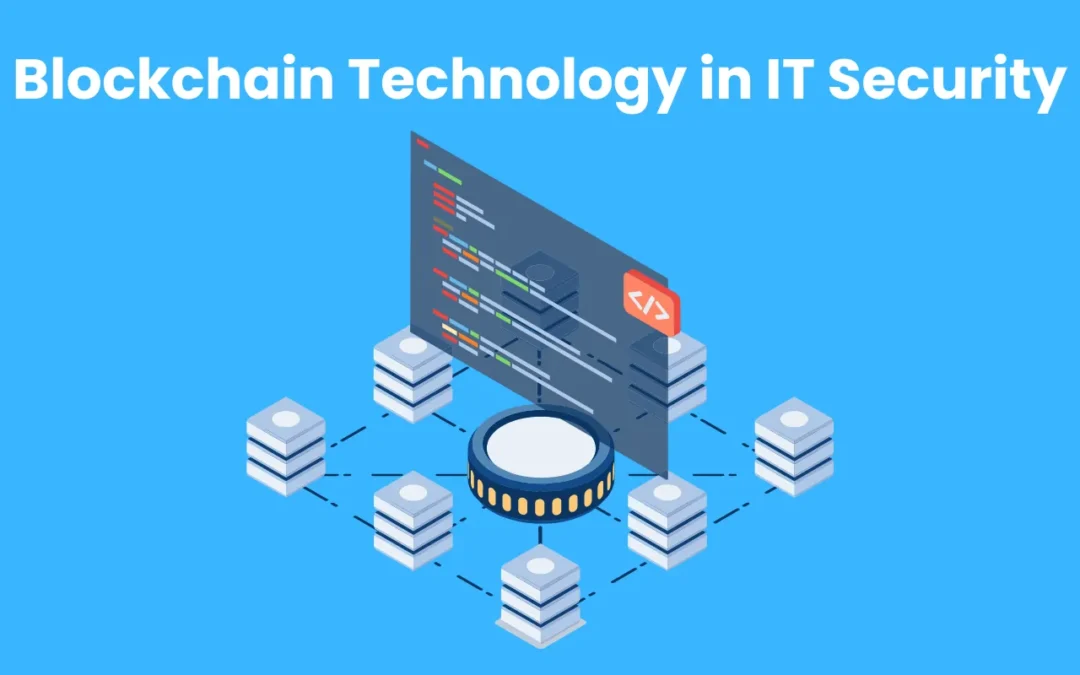Introduction Blockchain technology in IT security
The discipline of cybersecurity has seen the development of the technology known as the blockchain. As an agent for altering and providing creative ways to improve IT security procedures.
The basics are examined in this article. Some of the ways that blockchain strengthens security. actions related to technological advances. Let’s examine the ways that blockchain protects sensitive data and adds value to digital assets.
Blockchain Technology: Reinforcing IT Security
The technology behind blockchain offers an excellent basis for the transfer of information and electronic transactions. Here is an in-depth look at some of the main areas where IT security and cryptocurrencies meet.
Understanding Decentralisation
The basic element of blockchain distribution is decentralization. data among nodes in a network. therefore removing single points of failure and lessening susceptibility to dangers online.
This move away from centralized models is a strong paradigm. IT security through the prevention of criminal activity and the improvement of data resiliency.
A distributed ledger that promotes accessibility and consistency of data recordings is supported by blockchain technology. This cryptographic method provides unparalleled safety in digital settings by verifying and securing transactions.
Enhancing data integrityBlockchain technology in IT security
Digital computing is used by blockchain to ensure data integrity. Because every block in the chain has a distinct hash from the one before it, they are all unbreakable.
This function is critical for preserving the accuracy—and reliability of important data, which is essential to IT security procedures.
Smart Contracts: Automating Security Protocols
Smart contracts, built on the blockchain, automate security protocols and simplify compliance procedures. Les contrats self-executing appliquent des conditions préalables.
Role of Public and Private Keys
Public and confidential key cryptography supports blockchain security. Public keys act as addresses for exchanges. Private keys, on the other hand, are used for data encryption and authentication. IT security is strengthened by this cryptographic framework, which safeguards sensitive data and makes
Integration of Blockchain in IT Security
Blockchain technology integration. In IT security models, there are customary ways to deal with defending advanced resources. This is the way associations appreciate utilizing blockchain:
Improved data traceability and audibility
Blockchain’s transparent ledger enables real-time data traceability and auditability. This capability enhances compliance efforts and facilitates forensic analysis in cybersecurity investigations.
Mitigating insider threats
Blockchain’s decentralized nature mitigates insider dangers by limiting unapproved access to delicate information. By taking out mediators and executing permissions associations, they can reinforce their safeguard against insiders.
Strengthening Identity Management
Identity management systems based on the blockchain provide safe and verifiable methods of authentication. This innovation minimizes identity. Robbery guarantees the uprightness of client personalities across advanced stages.
Securing supply chain networks
Blockchain improves store network security by providing start-to-finish permeability and straightforwardness. This innovation empowers the unchanging following of merchandise, forestalling forging and guaranteeing item validity.
Conclusion
Blockchain technology is constantly evolving. IT security conventions, offering inventive arrangements. To battle digital dangers and shield computerized resources by making use of the decentralized framework of the blockchain.
Cryptographic safety efforts and associations. can strengthen identity management practices, automate compliance, and improve data integrity. adopting the blockchain, a paradigm shift towards resilient and robust cybersecurity frameworks in IT security.
FAQs:
1. How does blockchain upgrade network safety?
Blockchain decentralizes data storage, which improves cybersecurity. using cryptographic security measures and smart contracts to automate compliance
2. What obstacles must be overcome when using blockchain in IT security?
A few difficulties incorporate versatility issues, administrative intricacies, and interoperability worries between blockchain networks.
3. Will blockchain be able to stop data breaches?
Blockchain technology, on the other hand, can improve data integrity to prevent data breaches. It’s not insusceptible to a wide range of digital dangers.
